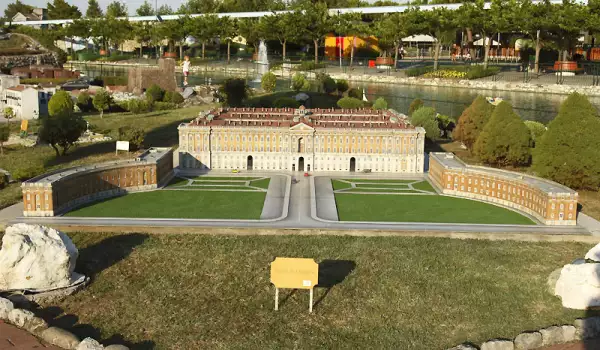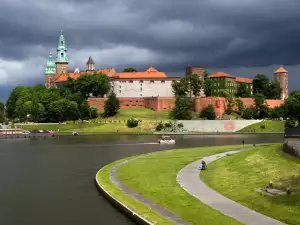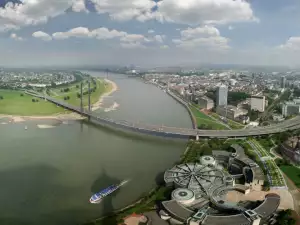Royal Palace of Caserta

Royal Palace of Caserta was voted one of the most serious competitors in the palace at Versailles. Many believe that this elegant building is the last significant piece of Italian baroque art.
It is located in the province of Caserta in the Italian region of Campania. The town itself, Caserta is situated at the foot of the mountain range. To get to this architectural masterpiece you can do so most easily by train or car, which you can get in Naples.
The Royal Palace of Caserta was built in the 18th century and together with its adjacent park, Aqueduct of Vanvitelli and San Leucio complex was listed as a World Cultural Heritage by UNESCO in 1996.
The original idea for the castle at Caserta originated from Karl IV, but its realization was due to Spanish, Carlos III, who ordered the huge complex to be built not beyond Naples.

Its construction was to celebrate the power and richness of the Bourbon kings. Likewise, Louis XIV built, Versailles Palace, outside Paris to get away from the inhabitants of the capital.
The architect of the Royal Palace in Caserta has Luigi Vanvitelli. He created this unique baroque castle with 1200 required rooms and 25 royal suites. Particularly impressive is the main staircase, consisting of 116 steps, all of which are made from a single block.
The front of the main palace in the gardens has many fountains and pools, most of which are beautiful with exquisite statues. To enable them to continuously be supplied with water, the architect of the palace had created an aqueduct. Among the lavish gardens of the park is a small theater that was built on the model of Naples Teatro San Carlo.

San Leucio complex is actually a royal silk factory and was built in the form of the Pantheon. In the rose gardens is the amazing waterfall that boast a height of 80 meters which is also powered by the aqueduct.
When it came to the construction of the road leading to the castle, the help of the residents was needed. The residents however were not so eager so it became compulsory for the locals to assist with construction. Ironically, Karl IV did not even spent a night in the palace.
When you walk around the park you must go to the most extreme part of the park where you will have the opportunity to see the fountain of Artemis and Ateon. Then be sure to explore and discover the "English Garden".
A fee must be paid in order to enter the Palace of Caserta and during major holidays the Palace will be closed for the public.















